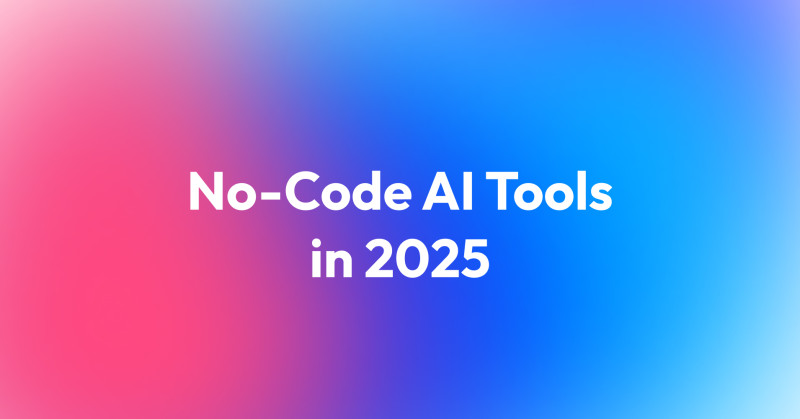As the global community grapples with the challenges of climate change, the shift towards renewable energy sources has never been more critical. The transition to clean energy is not only essential for reducing carbon emissions but also for ensuring a responsible future for generations to come. At the forefront of this revolution is artificial intelligence (AI), a powerful tool that is transforming how we produce, distribute, and consume energy. AI technologies are increasingly being integrated into the energy system, optimizing everything from energy generation to energy storage, and paving the way for a more efficient and resilient energy infrastructure.

In this article, we will explore how AI is revolutionizing the renewable energy sector, focusing on its applications in enhancing the efficiency of renewable energy, real-world examples of AI-driven innovations, and the significant benefits these technologies bring to the ongoing energy transition.
Read more to:
Discover how AI is transforming energy generation and management, particularly in the integration of solar and wind power into the grid.
Understand the challenges of implementing AI in the energy sector, including data quality issues and the need for ethical and unbiased systems.
Explore the future potential of AI, with advancements like quantum computing set to further enhance energy efficiency and system resilience.
Learn how AI optimizes the performance of solar panels and wind turbines, ensuring more reliable energy production and better grid stability.
The Intersection of AI and Renewable Energy
Artificial intelligence is rapidly becoming a cornerstone in the development and management of renewable energy systems. AI technologies empower the energy industry to enhance power generation, boost efficiency, and more effectively balance supply with demand.
One of the key areas where AI is making a substantial impact is in the management of energy supply and demand. AI algorithms can analyze vast amounts of data from various sources, such as weather patterns and energy consumption trends, to predict energy demand accurately. This capability is particularly beneficial for renewable energy sources like wind and solar, which are inherently variable. By predicting fluctuations in energy generation, AI helps stabilize the power supply, ensuring that energy systems remain reliable and efficient.
Moreover, AI plays a crucial role in optimizing energy storage solutions. As renewable energy sources like wind power and solar energy are integrated into the grid, energy storage becomes essential for balancing supply and demand. AI technologies can enhance the performance of batteries and other storage systems by predicting the best times to store and release energy, thus maximizing the use of clean energy and minimizing waste.
Real-World Applications of AI in Renewable Energy
One of the most compelling examples of AI in action is Google's use of AI to improve the energy efficiency of its data centers. By applying AI to manage cooling systems, Google has reduced the energy used for cooling by 40%. This AI-driven efficiency not only lowers operational costs but also supports the broader adoption of renewable energy by making energy consumption more predictable and aligned with the availability of clean energy sources.
Another notable application is in the optimization of wind and solar power generation. AI-driven systems are being used to adjust the positioning of wind turbines and solar panels in real time to capture the maximum amount of energy. For instance, AI can predict wind patterns and adjust turbine blades to optimize energy capture. Similarly, AI can enhance solar panel performance by forecasting cloud cover and adjusting operations accordingly, ensuring that solar and wind power generation is as efficient as possible.
These AI applications are not limited to large-scale operations. In smaller, decentralized energy systems, such as microgrids, AI helps manage the distribution of renewable energy more effectively, ensuring that even remote or off-grid communities can benefit from clean energy. This adaptability makes AI a vital tool in the global push towards a sustainable and resilient energy infrastructure.
AI's Role in Enhancing Solar and Wind Energy
AI is becoming increasingly vital in maximizing the efficiency and effectiveness of solar and wind energy systems, two of the most prominent renewable energy sources. The variability inherent in these energy forms—solar energy depends on sunlight, and wind power relies on wind conditions—poses significant challenges in maintaining a stable power supply. However, AI technologies are helping to overcome these challenges by optimizing both the generation and distribution of energy from these sources.
Solar Energy Optimization
In solar energy systems, AI is used to enhance the performance of solar panels by predicting and responding to environmental factors. Machine learning algorithms can analyze weather patterns, solar radiation levels, and historical data to forecast energy production accurately. These predictions enable energy providers to adjust the angle of solar panels or the configuration of solar farms to maximize energy capture, even on days with fluctuating sunlight. Moreover, AI can monitor the health of solar panels in real-time, identifying potential issues like shading, dirt accumulation, or hardware faults that could reduce efficiency. This predictive maintenance not only extends the lifespan of solar infrastructure but also ensures consistent energy output.
Wind Power Efficiency
Similarly, AI is revolutionizing the management of wind power. By analyzing wind speed, direction, and other meteorological data, AI can optimize the positioning of wind turbines to capture the maximum possible energy. Advanced AI models can also predict wind patterns more accurately, allowing for better integration of wind energy into the grid. This is crucial for balancing energy supply and demand, particularly in regions where wind energy contributes a significant portion of the power supply. Additionally, AI-driven control systems can adjust turbine blade angles and rotation speeds in real time, responding to changes in wind conditions to prevent damage and improve energy capture efficiency.
The Benefits of AI in Accelerating the Clean Energy Transition
The integration of AI into the renewable energy sector brings numerous benefits that are accelerating the transition to a sustainable energy future. First and foremost, AI significantly enhances energy efficiency across the board. By optimizing the operation of renewable energy systems and reducing energy waste, artificial intelligence helps lower the overall cost of clean energy, making it more competitive with traditional fossil fuels.
Additionally, AI improves the scalability of renewable energy projects. AI enables energy systems to scale efficiently by managing the complexities of integrating large amounts of renewable energy into the grid. This scalability is crucial for meeting global energy demand while reducing reliance on carbon-intensive energy sources.
Furthermore, AI contributes to the resilience of energy infrastructure. By providing real-time insights and predictive analytics, AI helps energy providers anticipate and respond to potential disruptions, such as extreme weather events. This capability is particularly important as climate change increases the frequency and severity of such events, posing new challenges to the stability of power supply systems.
In summary, the role of AI in the energy sector is multifaceted and transformative. From optimizing energy generation and storage to enhancing grid stability and resilience, AI is a driving force behind the renewable energy transition. As we continue to innovate and deploy AI technologies, the vision of a sustainable, clean energy future becomes increasingly attainable.
Challenges and Considerations of AI in the Energy Sector
Despite the numerous advantages of AI in the energy sector, several challenges and considerations need to be addressed to fully realize its potential. One of the primary concerns is the dependency on large volumes of high-quality data. AI systems require accurate, real-time data to function effectively, and any gaps or inaccuracies in data can lead to suboptimal performance. This is particularly crucial in complex systems like power grids, where data integrity directly impacts the stability and reliability of energy distribution.
Another significant challenge lies in the ethical and regulatory landscape. The use of AI in critical infrastructure, such as energy systems, raises questions about data privacy, algorithmic transparency, and the potential for unintended consequences. As AI-driven systems become more autonomous, ensuring that they operate within clearly defined ethical boundaries and regulatory frameworks becomes essential. Governments and industry leaders must collaborate to establish guidelines that promote innovation while safeguarding public interest.
Read more: The Importance of AI Transparency
Moreover, there's a concern about the bias that could emerge in AI algorithms, especially in favor of traditional energy sources over newer, sustainable options. This bias could arise from the historical data fed into AI models, which often reflect a time when fossil fuels dominated energy production. It is crucial to design AI systems that are neutral and focused on optimizing future-oriented energy solutions.
The Future of AI in the Energy Sector
Looking ahead, the role of AI in the energy industry is poised to expand dramatically. As technological advancements continue, AI will likely become even more integral to the development of advanced energy infrastructure. Quantum computing, for instance, could revolutionize how we process and analyze energy data, enabling more complex and efficient AI models that can handle the enormous scale and complexity of global energy networks.
In addition to technological advancements, the future of AI in energy will depend heavily on policy and industry collaboration. Effective public-private partnerships will be crucial in driving the adoption of AI technologies across the sector. These collaborations can facilitate the sharing of best practices, foster innovation, and ensure that the benefits of AI are widely distributed, particularly in underserved regions where modern energy solutions are desperately needed.
Furthermore, as AI becomes more sophisticated, it will play a pivotal role in enhancing the resilience of energy systems. In an era of increasing climate volatility, AI's ability to predict and respond to extreme weather events will be critical in maintaining uninterrupted power supply. This resilience will be key to ensuring the stability of energy systems in the face of growing environmental challenges.
AI Application in Renewable Energy
The integration of AI into the energy sector represents a transformative shift in how we manage and distribute power. From optimizing production and storage to enhancing the efficiency and resilience of energy systems, AI is proving to be an indispensable tool in the quest for a more sustainable energy future. However, to fully harness the power of AI, it is essential to address the associated challenges, including data quality, ethical considerations, and the need for robust regulatory frameworks.
As we look to the future, the continued collaboration between governments, industry leaders, and technology innovators will be crucial in ensuring that AI not only advances the energy sector but also contributes to a more sustainable and equitable global energy landscape. The promise of AI in energy is vast, and with careful management and forward-thinking strategies, it will undoubtedly play a central role in shaping the energy systems of tomorrow.





















